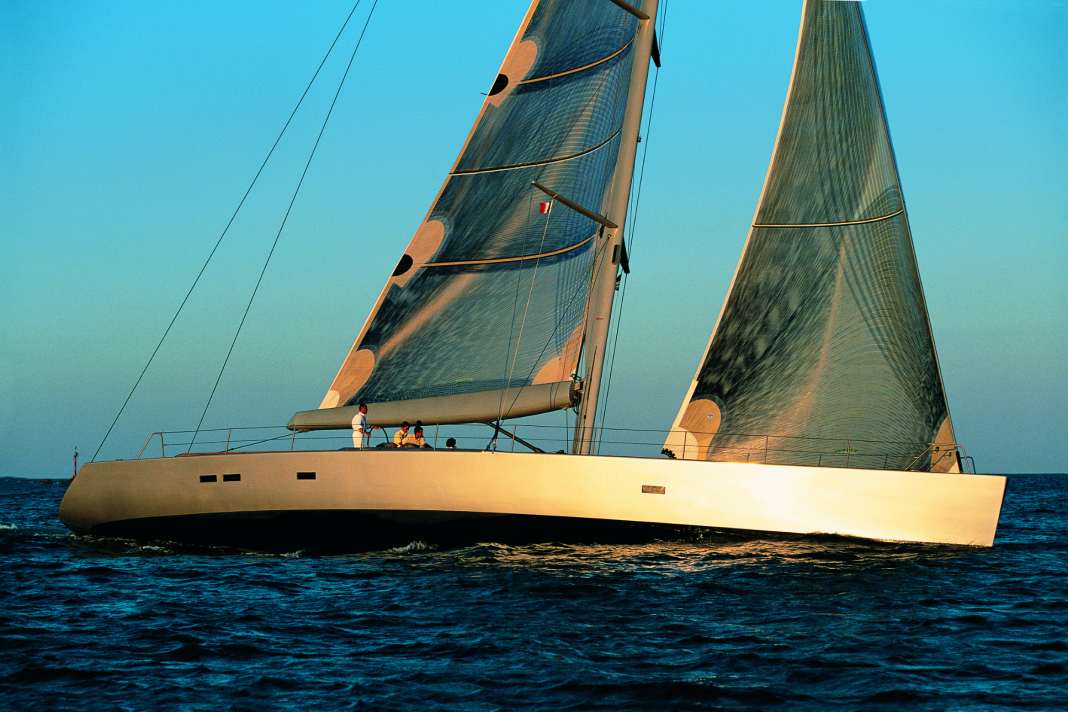





- Wally's credo: the courage to innovate
- Carbon fibre - lighter, stiffer, faster
- "Easy Sailing" - single-handed sailing made easy
- Lifting keel - access to shallower bays
- Beach club - more living space by the water
- Glass - closer to the sea thanks to a great view
- Inside and outside - when two areas merge
- Life on deck - a safe retreat for guests
- Submarine Anchor - when the iron falls out of the hull
- Tender - How Wally started the support yacht trend
- The minimalist Wally DNA is the link
The history of Wally is closely interwoven with its founder Luca Bassani. The 68-year-old visionary has shaped the world of superyachts and large sailing yachts like no other. When the Milan-born passionate sailor launched Wally in 1994, he had a clear vision: he wanted to make sailing easier, faster and more beautiful.
Wally's credo: the courage to innovate
In doing so, he revolutionised boat building, yacht design and a variety of technologies that have now become established on many yachts. "I was always looking for ways to improve the experience on the water in terms of performance, comfort and style," explains the founder of the Monegasque brand, which has its yachts laminated in both Forlì and Ravenna.
They say that imitation is the sincerest form of flattery, and many of Wally's innovations - from the early use of carbon fibre to the concept of "easy sailing" and fold-down bulwarks - have been adopted by a number of other shipyards over the years. "I can't imagine any better praise," Bassani says.
The latest partnership with the Ferretti Group is an important instrument for continuing Luca Bassani's unique way of thinking. "Today's market requires significant investment in the development of new products and the opening up of new markets," emphasises Bassani. "The Ferretti Group brings industrial, organisational and commercial strengths and supports Wally on a large scale."
Hardly any other brand has produced as many innovations as Wally. Technical refinements have become its trademark and have influenced the entire yachting industry.
The most significant developments of the past 30 years include
Carbon fibre - lighter, stiffer, faster
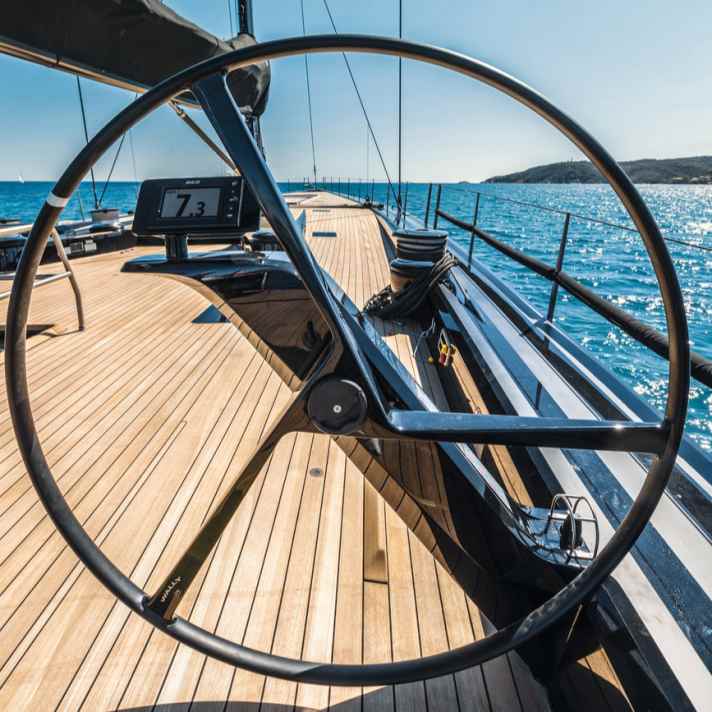
Everything from bicycle frames to ballpoint pens and champagne bottles are made of carbon fibre today, but this was not the case in 1991 when Bassani launched its own 25-metre yacht "Wallygator" (now "Wally One"). Its carbon sandwich hull and carbon fibre mast were an absolute novelty and a sensation in boat building at the time. Bassani took his inspiration from the New Zealand challenger KZ-1, the team that first sailed for the America's Cup in 1988 with a yacht with a carbon fibre mast. In 1994, "Wallygator II" (now "Nariida") took to the water, even sailing with carbon fibre laminate sails long before 3DL and 3Di membranes were available. Since then, Wally has been at the forefront of developments when it comes to carbon fibre. With the 50.50 metre long "Better Place", the Monegasques delivered the world's largest carbon-fibre sloop (and the first RINA Green Star sailing yacht).
"Easy Sailing" - single-handed sailing made easy

The "Wallygator" was both the catalyst and the prototype for many developments that are commonplace today. These included the simplification of the sail systems with a self-tacking jib, swept spreaders and thus the elimination of running backstays. Wally went one step further with the concept of "simple sailing" and developed a "push-button system" for trimming the sails. This system, with which large sailing yachts could also be conveniently steered and trimmed alone at the push of a button, was already used in 1988 on "Wallygator II", then "Tiketitan" and "Slingshot" (now "Itaca"). At that time, the sheets were running on Magic Trim cylinders from the Italian company Cariboni for the first time, which allowed significantly higher speeds when hauling the sheets tightly and fattening them. Wally has been able to continuously improve this automation technology over the decades, so that on current Wallys, such as "Tango", the jib can be furled and unfurled in just eight seconds.
Lifting keel - access to shallower bays
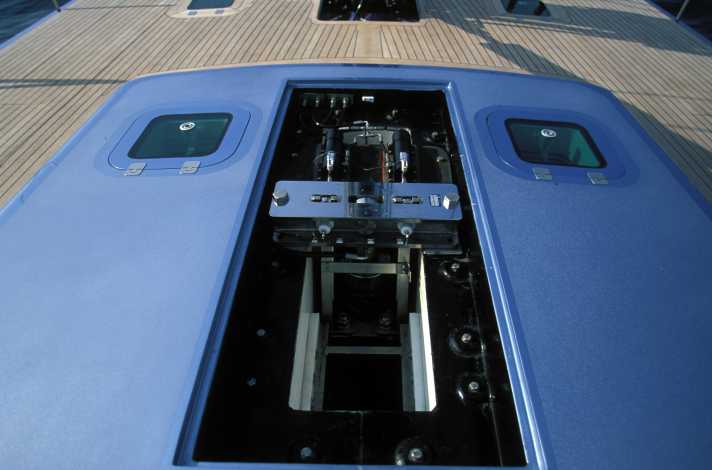
When the Wally 77 "Carrera" (now "Lyra") was launched in 2000, it was the first cruising yacht with a hydraulic lifting keel with lead bomb (as opposed to a centreboard or swing keel) for better sailing performance and easier access to shallow bays. Here, too, the technical systems were constantly expanded and optimised. Wally's first canting keel was used on "Tiketitan" in 1998, which was also a sensation at the time.
Beach club - more living space by the water
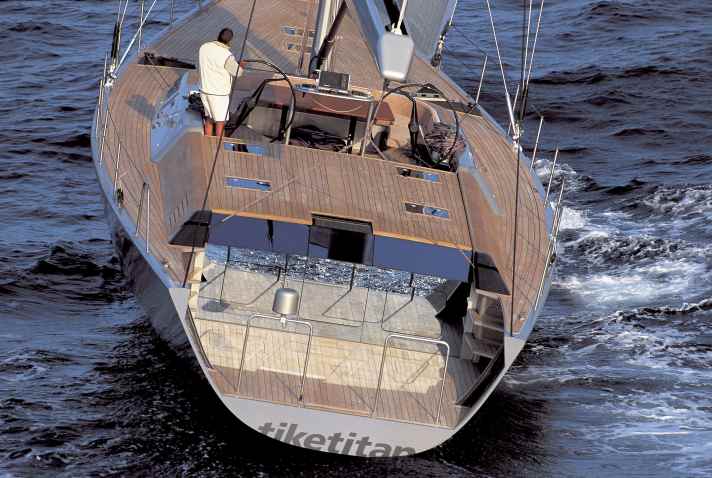
A beach club or a "Terrace on the Sea", as Wally calls it, brings the owner and his guests closer to the sea. The open aft deck offers enormous advantages, especially when at anchor. Nowadays, a beach club - on both motor and sailing yachts - is standard on modern large yachts. The concept of the "Terrace on the Sea" was created by Luca Bassani and was also first used on board the "Tiketitan", which had a main saloon with an unobstructed view of the open stern. The layout offered unique access to the sea and was adopted on other Wally yachts from 24 to 50 metres in length. In 2012, the concept was reinterpreted for the first Wallyace motor yacht, which featured an aft owner's suite and a VIP cabin with access to the stern terrace. Wally's "Terrace on the Sea" concept inspired numerous other brands to create similar designs.
Glass - closer to the sea thanks to a great view
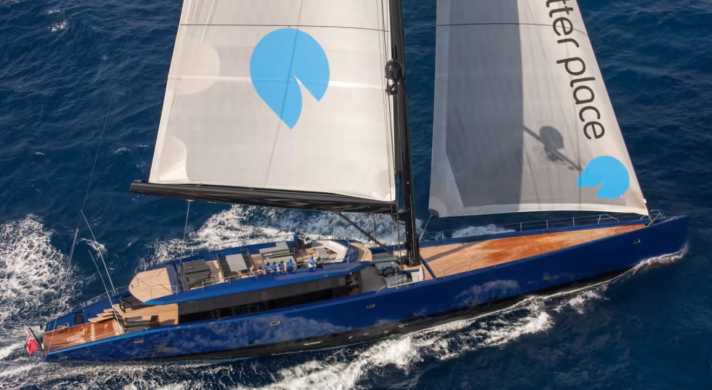
The mirrored glass stern on board the "Tiketitan" heralded another innovation that has since become commonplace: the extensive use of structured glass. The most striking example is the angular glass superstructure of the 118 Wallypower (now "Galeocerdo"), which caused a furore in 2003. With the lines of a stealth bomber and performance to match, the martial power format also featured a unique forward cockpit and folding bulwarks to extend the living area. The 50.50 metre long "Better Place" was the first supersailer with floor-to-ceiling windows in the superstructure.
Inside and outside - when two areas merge
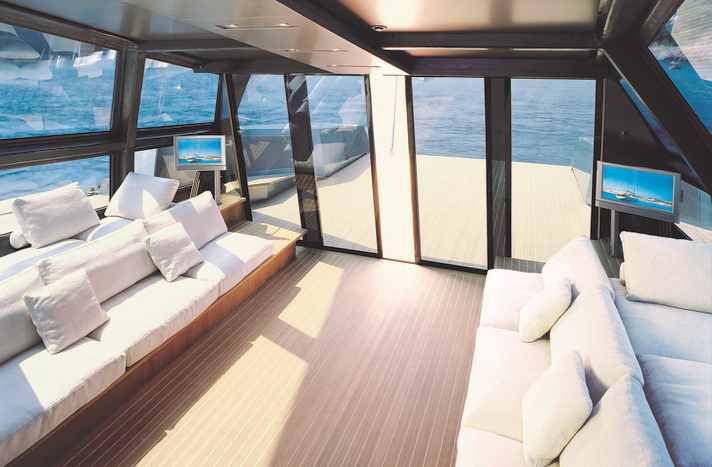
Every yacht designer today is trying to blur the boundaries between interior and exterior living areas. This mission has been an integral part of the Wally philosophy from the very beginning.
Life on deck - a safe retreat for guests
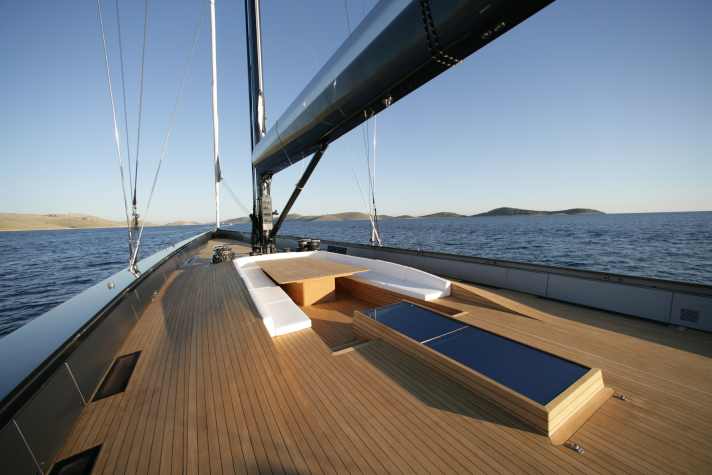
The design of the deck and cockpit is closely linked to the interior/exterior concept. Wally was a pioneer in the complete separation of the guest cockpit from the aft working cockpit. The separation ensured greater safety, efficiency and sailing pleasure. With "Esense" which was launched in 2006, this philosophy reached its absolute peak in 2006. The high bulwarks became an integral part of the hull structure and guaranteed longitudinal rigidity for the huge open area of the sheer deck.
Submarine Anchor - when the iron falls out of the hull
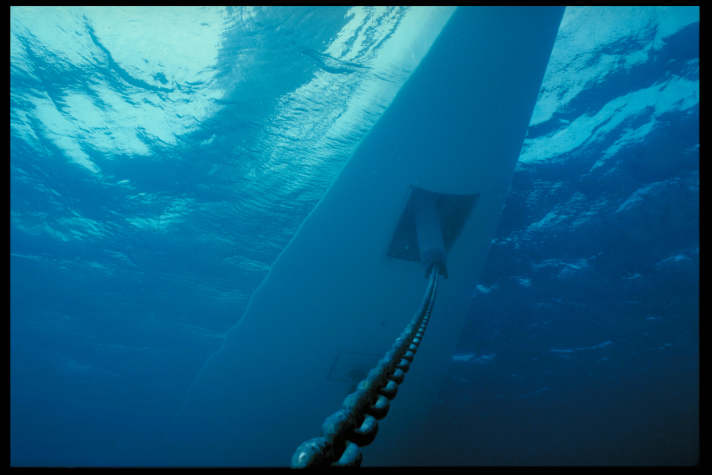
Luca Bassani introduced an anchor well system on board the "Wallygator II" for the first time. The underwater mechanism ensured better weight distribution, as the anchor and chain locker was moved aft instead of in the bow. This reduced pitching under sail. The system has been further developed and refined over the years and is now standard equipment on every Wally sailing yacht.
Tender - How Wally started the support yacht trend
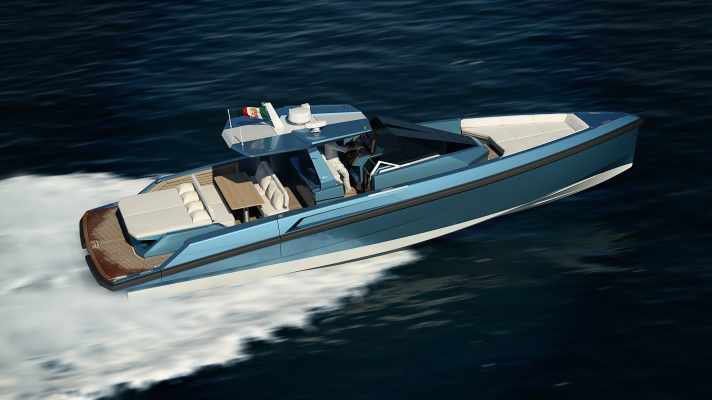
The Wallytender is an icon of boat building. In 2001, the sporty weekender with the mini Wallypower look opened up a market that had not existed until then: shadow yachts. The currently listed Wallytender models have many of the features that have become the Wally standard over the last 30 years. Among them: Fold-down bulwarks, lightweight CFRP composite construction, structural glass and an open layout. Some of the tenders still accompany the mother ships from bay to bay as shadow boats.
The minimalist Wally DNA is the link
Even though Luca Bassani and Wally have achieved a lot in their 30-year history, the innovative developments are often not recognisable at first glance. However, all inventions and approaches share the typical minimalist Wally DNA.
Luca Bassani on the question of what many years of evolution in yacht building have brought to his boats: "Advanced materials such as prepreg carbon fabrics, high-tech fibres for the standing and running rigging and lightweight titanium for the fittings make the boats stiffer, lighter and more reliable. This also applies to the electronic equipment and controls, which make all boats even safer and more comfortable. We continue to build yachts according to the motto 'fast and easy', but today our customers and their crews are much more involved in the development. Owners' experiences with previous Wallys are an invaluable source of knowledge for us. Their personal wishes and ideas play a much greater role in the planning process than was previously the case."

